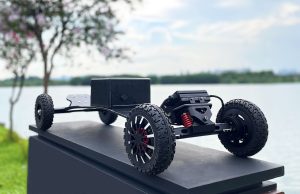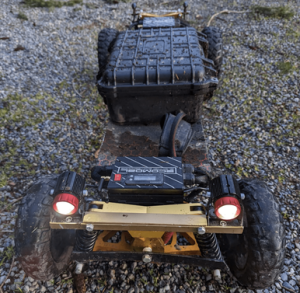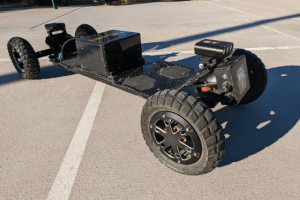Electric skateboards have exploded in popularity in recent years as technological advances have enabled high-performance and compact designs. With this rapid growth, two primary electric skateboard drive systems have emerged as front-runners – belt drive motors and direct drive motors.
Each drive type has its own set of unique advantages and disadvantages. In this article, we will compare the performance, durability, and maintenance considerations of belt drive vs. direct drive motors. Whether you are recreational, racing, or commuting, the right drive system is key to the optimal electric skateboard experience.

The Mechanics of Belt Drive Motors
Belt drive motors utilize a toothed belt to transfer power from the motor to the wheels. An electric motor is mounted inside an enclosure on the truck. Its spinning output shaft connects to a pulley. This pulley turns a tough polyurethane or carbon fiber belt, which wraps around a second pulley attached to the drive wheel.
As the motor spins its output shaft and the attached pulley, it rotates the belt. The belt then transfers this rotational force to turn the wheel pulley, powering the rotation of the drive wheel.
Positioning the motor away from the wheels with this belt drive system provides more flexibility in design. It also protects the motor internals from debris, dirt, and water that could get flung up from the ground. The enclosure helps keep the motor dry and clean for longer-lasting performance.
Anatomy of Direct Drive Motors
In a direct drive motor, the electric motor is directly integrated into the wheel hub. An enclosure inside the hub houses the motor, with its output shaft connected straight to the wheel’s axle.
When powered on, the motor’s spinning output shaft directly drives the rotation of the wheel without any belts, gears, or other mechanisms. This allows for a simple and compact design by eliminating pulleys, belts, and other drive components.
Positioning the motor right at the wheel puts it in direct contact with the ground. This does expose the motor more to debris, water, and dirt flung up while riding. Over time, this can potentially allow contaminants into the motor housing that could cause wear.
An advantage of the direct drive design is a lower center of gravity from the motor weight being situated close to the ground. This gives better overall traction and stability. The direct power transfer is also efficient for delivering strong low-end torque.
Overall, the direct drive motor provides a streamlined but more exposed layout with great traction and acceleration torque.

Comparison of Performance
In terms of performance, belt drive motors tend to have an edge in top speed over direct drive configurations. The gear reduction from the belts allows the motors to spin at higher RPMs, achieving greater top speeds. However, direct-drive motors offer stronger acceleration and torque due to their more direct power transfer without any loss from belt slippage or gearing. This extra low-end torque makes the direct drive better for harsh acceleration and climbing steep hills. Speed and acceleration tend to be very close between the two when using comparable power systems. Direct drive slightly edges out belt drive in hill climbing due to its lower centered weight and powerful torque off the line. But for flat-out top speed, belt drive configurations are generally faster with their higher acceleration RPM capable motors.
Comparison of Durability
When it comes to durability, belt drive motors have the advantage of protecting the motor from weather and debris better than direct drive systems. With direct drive, any dust, water, or dirt flung up by the wheels goes directly into the motor housing. Over time, this can potentially damage internal motor components sooner. Belt drive designs keep the motor dry in its own sealed compartment. The belts themselves are also durable and often don’t need replacing for tens of thousands of miles. On the wheel side, direct drive puts more strain on bearings and bushings due to the extra weight and vibration of the in-hub motor. Belt-drive skateboards tend to have longer-lasting wheels as a result. However, the belt drives do introduce belts as replaceable parts that may need swapping periodically depending on climate conditions.
Comparison of Maintenance
When it comes to maintenance, belt drive systems require periodic belt replacement depending on usage and weather conditions. Typical belt life ranges from 500-1000 miles before needing to be swapped out. Direct drive removes belts as worn items, simplifying maintenance in that regard. However, direct drive motors themselves will likely last fewer miles before needing rebuild or replacement due to increased wear from operating in exposed conditions. Belt drives produce less noise also since the motor is isolated from the riding surface. Direct-drive skateboards tend to be noisier with the motor on the wheels. Both systems require very little lubrication, though belt drives may involve occasional lubricating of the belt slides and pulleys to improve efficiency. Overall, belt drive is lower maintenance in the long run due to better motor protection and fewer component replacements or rebuilds required over the lifetime of the board.

Recommendation
After riding many belt drives and direct drive boards over thousands of miles, my recommendation would be to choose belt drives for most applications and riders.
For recreational, commuting, and regular riding, the durability and reliability of a belt drive motor is hard to beat. The enclosed motor is protected from debris and water, requiring less maintenance and extending the lifespan compared to a direct drive’s exposed motor. Although direct drive offers stronger low-end torque, a belt drive’s smooth power delivery and long-term durability make it a better choice for the average user.
Direct drive does have its places, such as for downhill racing boards where acceleration out of turns is crucial. But day to day, the extra motor protection and reliability of the belt drive provide greater overall value. With proper precautions, even rugged direct-drive setups can certainly work fine. It just depends on your priority of performance versus long-term ‘set and forget’ durability.
Read More
- All Terrain Electric Skateboards Gaining Popularity – Ecomobl
- Exploring The Off Road Capabilities Of Electric Mountain Boards – Ecomobl
- Electric Longboard Price Guide – Ecomobl
- Master Emergency Braking On Electric Skateboard – Ecomobl
- How To Choose The Right Electric Skateboard – Ecomobl




